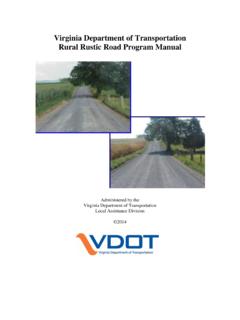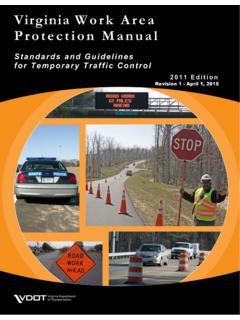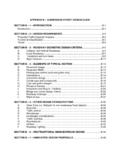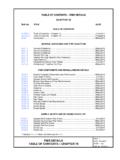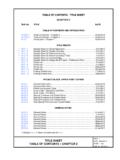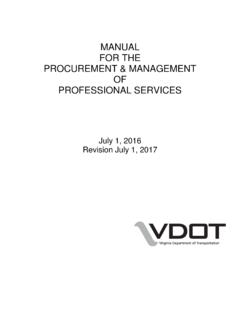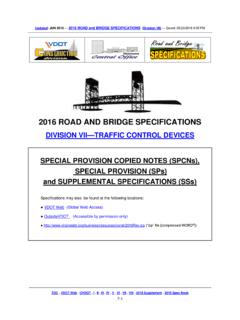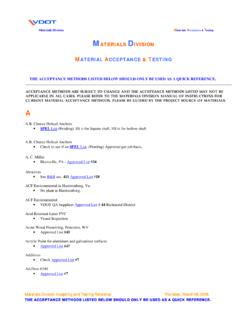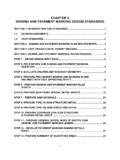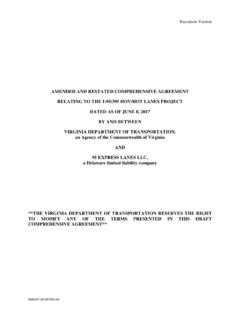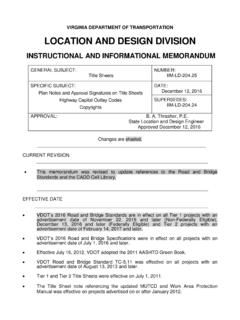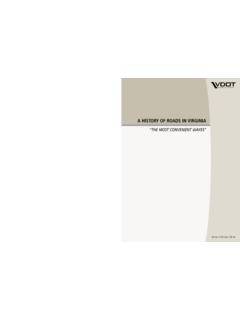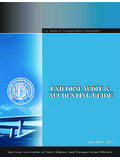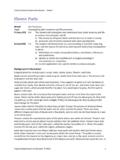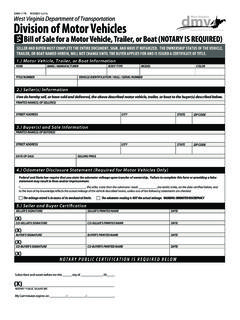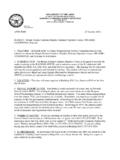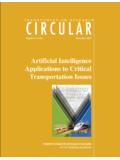Transcription of VIRGINIA DEPARTMENT OF TRANSPORTATION STRUCTURE …
1 VIRGINIA DEPARTMENT OF TRANSPORTATION STRUCTURE AND bridge division INSTRUCTIONAL AND INFORMATIONAL MEMORANDUM GENERAL SUBJECT: Load Rating and Posting of Structures (Bridges and Culverts) NUMBER: IIM-S& SPECIFIC SUBJECT: N/A Date: December 13, 2016 SUPERSEDES: IIM-S& division ADMINISTRATOR APPROVAL: /original signed/ Kendal R. Walus, State STRUCTURE and bridge Engineer Approved: December 13, 2016 Changes are shaded.
2 EFFECTIVE DATE: This memorandum is effective upon receipt. PURPOSE To establish guidelines for load rating and posting of structures (bridges and culverts). SCOPE Individuals or entities performing load rating services for the VIRGINIA DEPARTMENT of TRANSPORTATION (VDOT) shall adhere to the requirements herein. Entities must meet Federal and State statutory and regulatory requirements. VDOT preferences and guidance are strongly encouraged to provide consistent treatment to motorists statewide. ANALYSIS METHOD, SOFTWARE REQUIREMENTS AND LOAD RATING PROCESS The load rating of all structures shall be performed in accordance with these guidelines and the latest American Association of State Highway and TRANSPORTATION Officials (AASHTO), Manual for bridge Evaluation (MBE).
3 All load rating analyses shall use the Load and Resistance Factor Rating (LRFR) method, except for those structures noted under either the SPECIAL CRITERIA or SAFE POSTING LOAD sections below. Instructional & Informational Memorandum IIM-S& Sheet 2 of 33 Typically, only superstructure elements, including integral pier caps, will need to be load rated except as follows: Decks shall be evaluated where the condition or geometry (supported by two girders/beams or single cell box, excessive span between girders/beams, etc.) of the deck is suspected to govern the load rating. Substructure elements shall be evaluated where the condition or geometry of the substructure element(s) are suspected to govern the load rating.
4 Scenarios of where substructure element conditions may prompt a load rating include extensive section loss, scour/undermining, settlement, collision damage and as needed for reviewing over weight load permit requests. Timber substructures ( Bent Caps) can often control the load rating for a STRUCTURE . Should any primary load carrying member or detail be suspected of not performing up to its design capacity, that member or detail shall be considered in the overall structural analysis. Unless otherwise directed by the Assistant District bridge Engineer for Safety Inspection, the Load Rating Program Manager, or their designee(s), cross frames in curved girders and in highly skewed bridges need not be rated.
5 Except for exceptional circumstances, with prior approval of the Load Rating Program Manager, steel structures may not be rated using plastic analysis. AASHTOWare Br|R (Formerly Virtis ) software shall be used for load rating bridges, except as follows: Steel curved girders shall be rated using DESCUS software. Ratings of all other structures that are beyond the capabilities of BrIR and DESCUS including segmental or/and spliced Bulb Tee sections shall be completed using LARSA 4D. Other software platforms may be used in exceptional circumstances with prior approval of the Load Rating Program Manager. All structures analyzed in LARSA 4D or other exceptional use software shall be rated for the additional special permit vehicles available by emailing Information regarding the VDOT approved version of AASHTOWARE Br|R , DESCUS and LARSA 4D may be found on the VDOT STRUCTURE and bridge web site under Useful Information.
6 When using Br|R , each bridge shall be entered as a system of girders, not as single structural elements (line girder analysis). In addition, a bridge alternative(s) must be defined and appropriately marked to allow for the load rating to be run from the bridge Explorer window. After each significant change in condition, collision incident and/or construction event (including As-Built conditions, maintenance/rehabilitation activities, etc.) a new bridge alternative shall be developed and the STRUCTURE re-rated. Culverts shall be evaluated using current guidance and load rating principles included in Appendix A of this document. Instructional & Informational Memorandum IIM-S& Sheet 3 of 33 WHEN LOAD RATINGS ARE REQUIRED An updated or new load rating will be required in accordance with the table below.
7 Reason for Rating Timeframe to Complete Commentary New structures Widenings Superstructure replacements Repairs/Rehabilitation(4) As-designed load rating(s) shall be submitted with final plan submissions For Design-Build or similar processes, as-designed load rating(s) shall be submitted as part of the process to obtain plan approval before superstructure construction begins The As-Built load rating shall be submitted within 90 days after opening the STRUCTURE or portion of the STRUCTURE to traffic (1), (3) Where applicable, the load rating shall accurately model all stages of construction Changes in loading (overlay, etc.) and changes in condition due to deterioration(5) (section loss, etc.), repairs, rehabilitation, and collision damage.
8 Within 90 days after becoming aware of the change (1), (2), (3) (1) If the changes in loadings or conditions (including shop drawings review or As-built) are significant, the changes shall be evaluated immediately by the District bridge Engineer or their designee. As a precautionary measure, engineering judgment may be used to lower the load rating capacity of the STRUCTURE for the safety of the traveling public until the load rating is performed. This determination shall be recorded in the load rating documentation. (2) For complex and unusual structures, the deadline may be extended as approved by the Assistant State STRUCTURE and bridge Engineer for Safety and Inspection as necessary to initiate a load rating contract.
9 Until a contract can be initiated, the District bridge Engineer or their designee as a precautionary measure may exercise engineering judgment to assign the load rating capacity of the STRUCTURE . (3) All load rating values that are entered into the bridge inventory, from engineering calculation, or if lowered by engineering judgment, shall be sealed and placed in the bridge file. (4) Any temporary measure left in place under live traffic during a repair, such as jacking and blocking, shall be evaluated to determine if it controls the rating for the affected portion of the STRUCTURE while in place. All conditions that lower the controlling rating shall be reported to the permitting section 30 days prior to being in place along with the expected duration and dates of the temporary condition.
10 Item 103 in the inventory shall be coded appropriately for temporary conditions. (5) An updated load rating shall be considered for all structures when the Superstructure or Culvert General Condition Rating (GCR) drops to 4. As a part of each STRUCTURE s regular safety inspection, the District bridge Engineer or their designee will determine if the load rating on file reflects the current capacity of the STRUCTURE and will be responsible for updating the load rating as necessary. If a new load rating is not warranted, this determination shall be recorded in the Structural Analysis section of the safety inspection report. Instructional & Informational Memorandum IIM-S& Sheet 4 of 33 DOCUMENTS REQUIRED FOR LOAD RATINGS The District bridge Engineer or their designee is responsible for ensuring that all supporting documentation is available to rate the STRUCTURE in its current condition.
